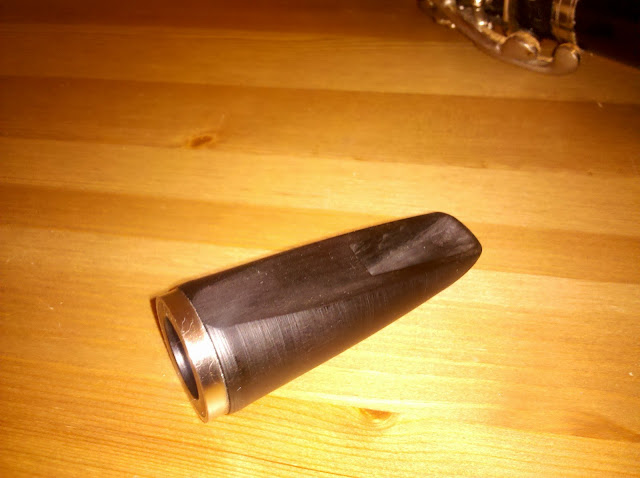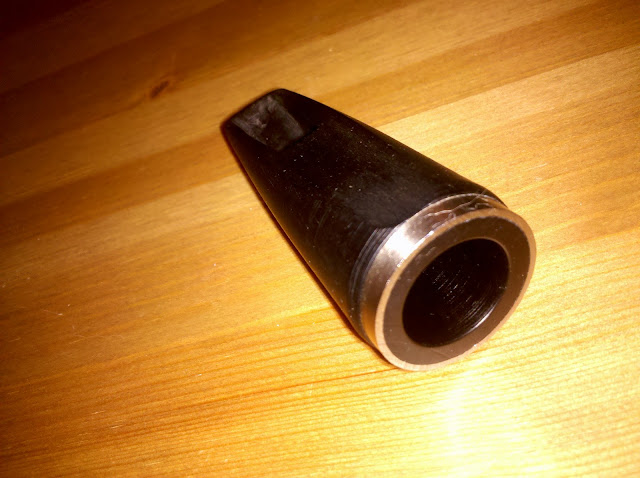I decided to overhaul the 1991 Timis taragot that is in my possession at the moment, so today I made a brand new mouthpiece - a copy of a very good one I use on my main instrument. I had a chunk of ebony in the workshop, so I chucked it in the lathe and a new mouthpiece was born. It produces a strong clear sound, and lets the Timis play in 2 octaves now. Here are some photos:










